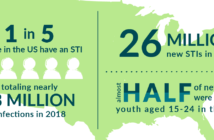The new President Donald J. Trump has stated that he will continue his efforts to bring back coal mining jobs to the United States. These efforts seem controversial in an industry that has seen a massive decrease through automation and a decrease in demand for coal.
There already are technological advancements in the industry; for example, in an Appalachia coal mine in Decatur, Ill., engineers are working and testing self-driving mammoth haul trucks that need little to no human supervision. However, in spite of the technological advancements, Trump has made clear his disapproval for this decrease in coal mining jobs.
“I have had support from you folks right from the beginning and I won’t forget it. This is HJ resolution 38 that will save many thousands American jobs, especially in the mines, which I have been promising you,” said Trump in an announcement about the Bill that should protect mining jobs.
While jobs should be saved, the newest self-driving technology is being used for 850,000 pound trucks that can work without remote operators or drivers. In addition to the transportation trucks, new drills and a more efficient use of explosions has led to a further decrease in mining jobs. In fact, Caterpillar, a company that manufactures construction machinery, already has autonomous trucks that are used in mines in Western Australia. Caterpillar states on their website that “An autonomous truck doesn’t need to stop for lunch breaks or shift changes.”
Despite these facts, on Mar. 28, Trump announced that he is deciding to move forward in dismantling the Obama administration’s climate change efforts. Through the cheap and easy availability of natural gas, the electricity made from coal has become less competitive for the electricity generation. Furthermore, electricity sales are decreasing, while the export of coal is constantly falling.
“People think of coal mining as some 1890s, colorful, populous frontier activity, but it’s much better to think of it as a high-tech industry with far fewer miners and more engineers and coders. The regulatory changes are entirely outweighed by these technological changes, not to mention the price of natural gas or renewables,” said Mark Muro, who is a senior fellow at the Brookings Institution’s Metropolitan Policy Program, to the New York Times.
The issue of preserving jobs in the coal industry is a two-sided argument, with politicians who want to keep dying industries alive through government funds, where as others would like to use renewable energy sources instead for sustainable growth. The U.S. Chamber of Commerce has opposed regulations on carbon emissions and stated that former President Obama’s Clean Power Plan would result in a loss of 200,000 jobs each year until 2030. However, energy and labor specialists said that this projection is wildly overstated in an interview with the New York Times.
On the other hand, environmental groups state that jobs related to clean energy would create as many as 274,000 new jobs until 2020, according to the Natural Resources Defense Council. The plan from the Obama administration was to close hundreds of coal-fired power plants and stop the construction of new plants. To meet the plan of decreasing carbon emissions by 26 percent by 2025, the plan was to replace coal energy with solar and wind farms. However, the plan has not been put in effect because it had been blocked by the Supreme Court.
Even if the government does not regulate carbon emissions, the coal mining jobs will not come back unless the government substitutes the industry with hundreds of billions of dollars.
From 1980 until 2015, the coal production has increased by eight percent, and in the same time, the industry saw a decrease in their workforce from 242,000 to less than 100,000. Essentially, through the use of technology and automation, the productivity per worker has almost tripled, according to data from the federal Energy Information Administration and the Brookings Institution.
The jobs in the coal industry have decreased drastically and is predicted to decrease even more. In fact, in a recent study by the International Institute for Sustainable Development and the Columbia Center on Sustainable Investment, it is predicted that automation is likely to replace 40 to 80 percent of workers at mines.
“However way you spin it, gas and renewables are going to continue to replace coal and in order to stay competitive, coal will have to increase automation. What Mr. Trump does will make little difference,” said Nicolas Maennling, a senior in economics and policy researcher at Columbia University, who is also an author of the automation study to New York Times.




